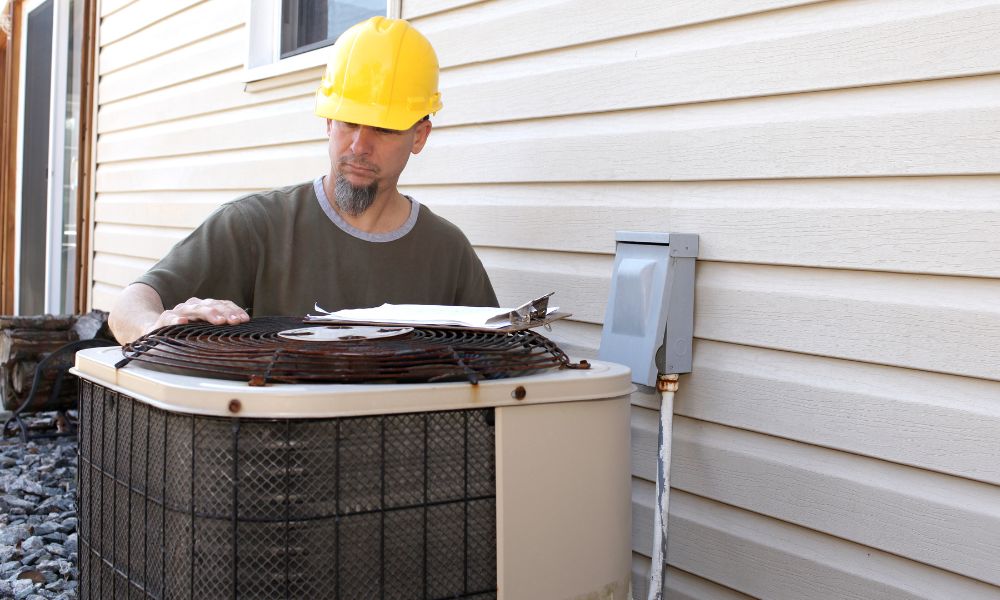Air conditioning installation is a pivotal step in creating a comfortable indoor environment, particularly in regions with hot climates. Proper installation not only ensures efficient cooling but also contributes to energy savings and system longevity. This article delves into the nuances of AC installation, guiding you through the process and highlighting key considerations.
Types of AC Units
Before delving into installation specifics, it’s essential to understand the various types of AC units available. These include window units, split systems, central air conditioning, and ductless mini-split systems. Each type has its unique features and suitability depending on factors such as space size, cooling requirements, and budget constraints.
Factors to Consider Before Installation
Selecting the right AC unit entails considering several factors. These include the size of the space requiring cooling, desired cooling capacity, energy efficiency ratings, and budgetary constraints. Proper assessment of these factors ensures that you invest in an AC system that meets your needs while optimizing energy usage.
Pre-Installation Preparation
Preparation is key to a successful AC installation. This involves assessing the installation area to ensure compatibility with the chosen AC unit. Adequate ventilation is crucial for optimal performance, and any necessary electrical upgrades should be completed beforehand to support the new system’s requirements air conditioning repair los angeles.
DIY vs Professional Installation
While some may opt for a do-it-yourself approach to AC installation, hiring a professional HVAC technician is often recommended. Professional installation ensures that the system is installed correctly, minimizing the risk of errors and ensuring warranty compliance. Additionally, professionals have the expertise to address any unforeseen challenges during installation.
Steps for Professional Installation
Professional AC installation typically follows a structured process. This includes a comprehensive site inspection to assess installation requirements, followed by the installation of ductwork if needed. The indoor and outdoor units are then mounted, and electrical connections are made. Finally, the system undergoes thorough testing to ensure proper functionality.
Safety Measures During Installation
Safety is paramount during AC installation to prevent accidents and ensure the well-being of occupants. Proper ventilation is essential to prevent the buildup of harmful gases, and technicians must handle refrigerants and electrical components with care to mitigate risks.
Common Installation Mistakes
Avoiding common installation pitfalls is essential for maximizing the efficiency and longevity of your AC system. These include selecting the wrong size unit, placing units incorrectly, and neglecting regular maintenance. Proper installation and ongoing maintenance help avoid these pitfalls, ensuring optimal performance.
Benefits of Proper Installation
Investing in professional AC installation offers numerous benefits. These include improved energy efficiency, enhanced indoor air quality, and prolonged system lifespan. Proper installation ensures that the system operates at peak performance, providing consistent comfort throughout the year.
Cost of Installation
The cost of AC installation varies depending on factors such as the type and size of the unit, installation complexity, and geographical location. On average, homeowners can expect to pay a few hundred to several thousand dollars for professional installation services.
Warranty and Maintenance Contracts
Many AC manufacturers offer warranty coverage for their products, providing protection against defects and malfunctions. Additionally, maintenance contracts are available to ensure ongoing performance and efficiency. These contracts typically include regular inspections, cleaning, and tune-ups to keep your AC system running smoothly.
Conclusion
AC installation is a critical investment in your home or business, impacting comfort, energy efficiency, and indoor air quality. By understanding the installation process and working with qualified professionals, you can enjoy the benefits of a reliable and efficient cooling system for years to come.
FAQs
- What size AC unit do I need for my home?
- The size of the AC unit depends on factors such as the size of your space, insulation, and climate. A professional HVAC technician can conduct a load calculation to determine the appropriate size for your needs.
- How long does AC installation typically take?
- Installation duration varies based on factors such as system type and complexity. On average, installation can take anywhere from a few hours to a couple of days.
- Can I install an AC unit myself?
- While DIY installation is possible, it’s recommended to hire a professional to ensure proper installation and warranty compliance.
- What maintenance is required after AC installation?
- Regular maintenance, including filter changes and system inspections, is essential to keep your AC unit running efficiently and prolong its lifespan.
- What should I do if I encounter problems after installation?
- If you experience any issues with your AC system, contact a licensed HVAC technician for troubleshooting and repairs.




